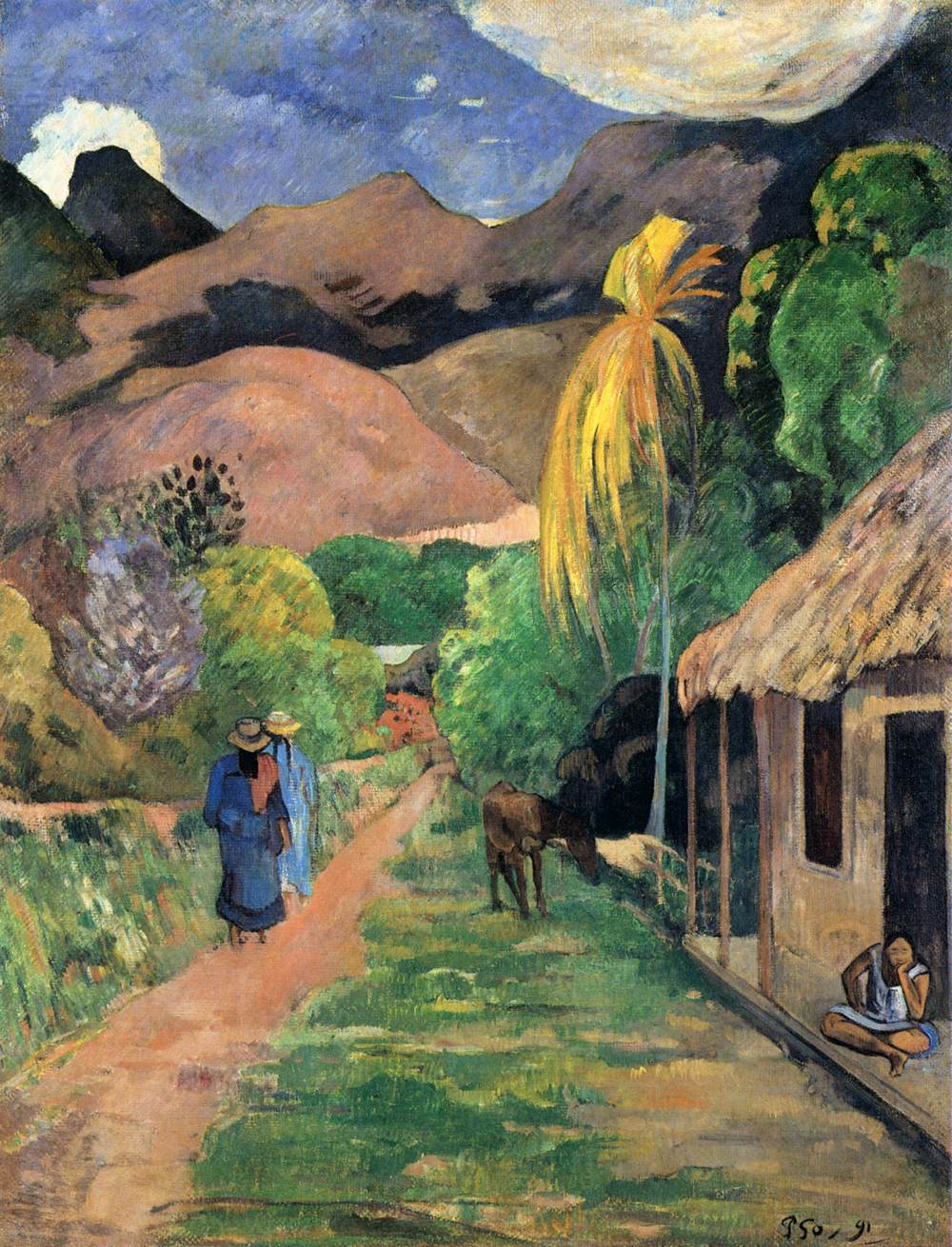Description
Paul Gauguin's Street in Tahiti painting is a masterpiece of Post-Impressionist art that captures the essence of life in French Polynesia. This work was created in 1891, when Gauguin was in Tahiti, immersed in the culture and natural beauty of the island.
Gauguin's artistic style is easily recognizable in this painting, with its bright, saturated colors and simplification of forms. The composition of the work is interesting, as the artist chose to show a sinuously curved street stretching towards the horizon, with buildings and trees on both sides. The perspective is a bit strange, as the buildings appear to be leaning towards the viewer, creating a sense of depth and movement.
Color is one of the most notable aspects of painting. Gauguin used a bold and vibrant palette, with shades of red, yellow, green and blue blending and layering to create a feeling of tropical warmth and humidity. The colors also reflect the rich culture of the island, with the red and yellow tones evoking the passion and energy of the local inhabitants.
The story behind this painting is interesting, as Gauguin created it while in Tahiti, at a time when he was trying to escape life in Europe and connect with a more primitive and authentic culture. The work reflects his fascination with life on the island, as well as his desire to escape Western society and its norms.
Also, there is a little-known aspect of this painting that is worth mentioning. Gauguin used an engraving technique called monotype to create the image, which means that only one print of the painting was made. This makes the work even more valuable and unique, since there are no other exact copies of it.
In short, Street in Tahiti is a stunning work of art that reflects Gauguin's fascination with the culture and natural beauty of French Polynesia. Its artistic style, composition, color, and the story behind the painting make it a truly remarkable work of art.

